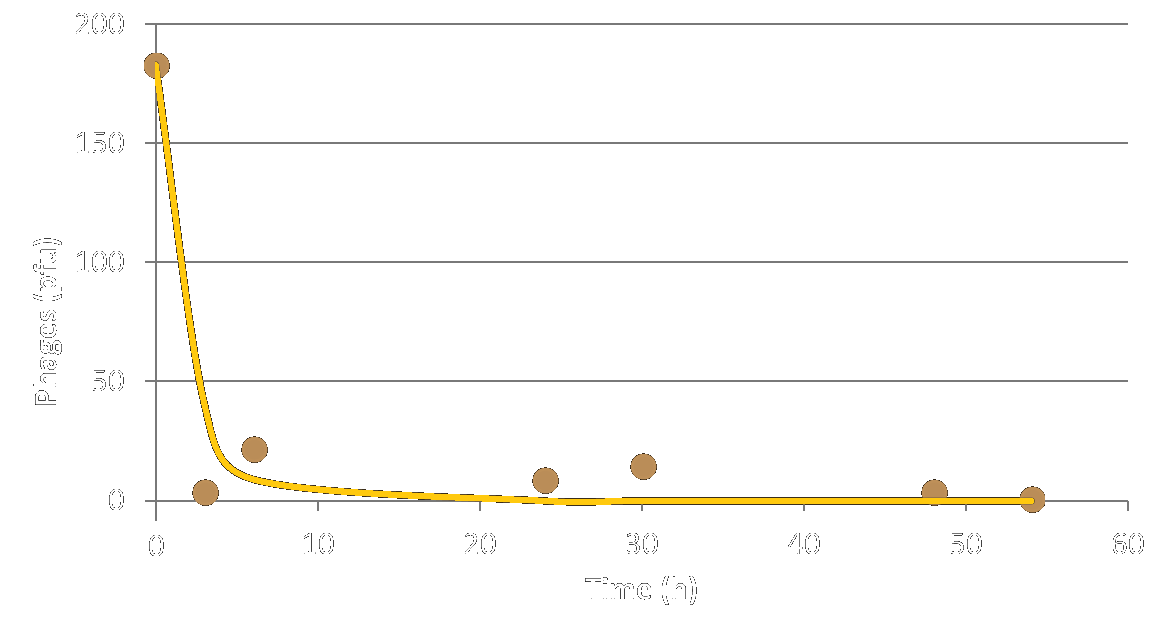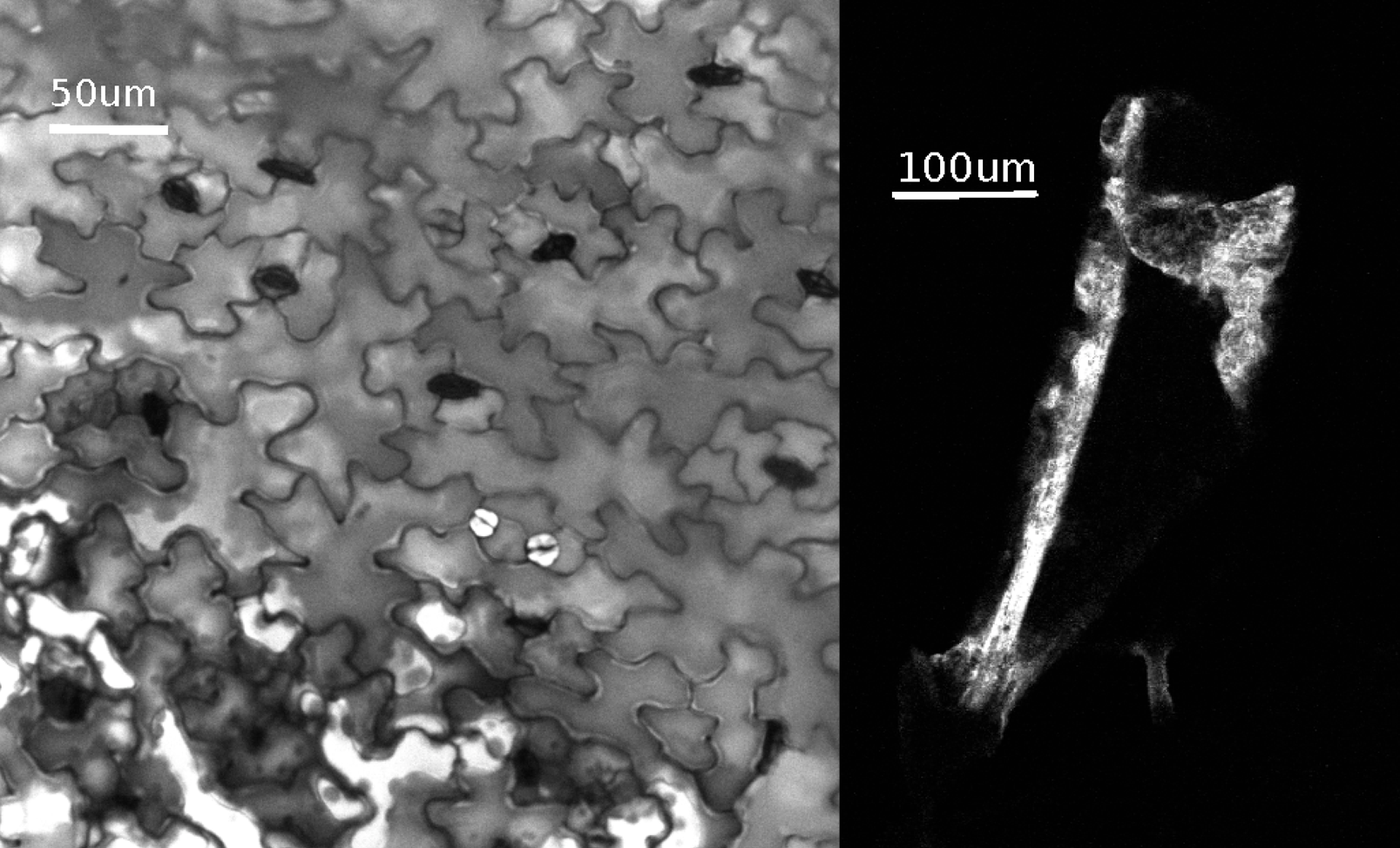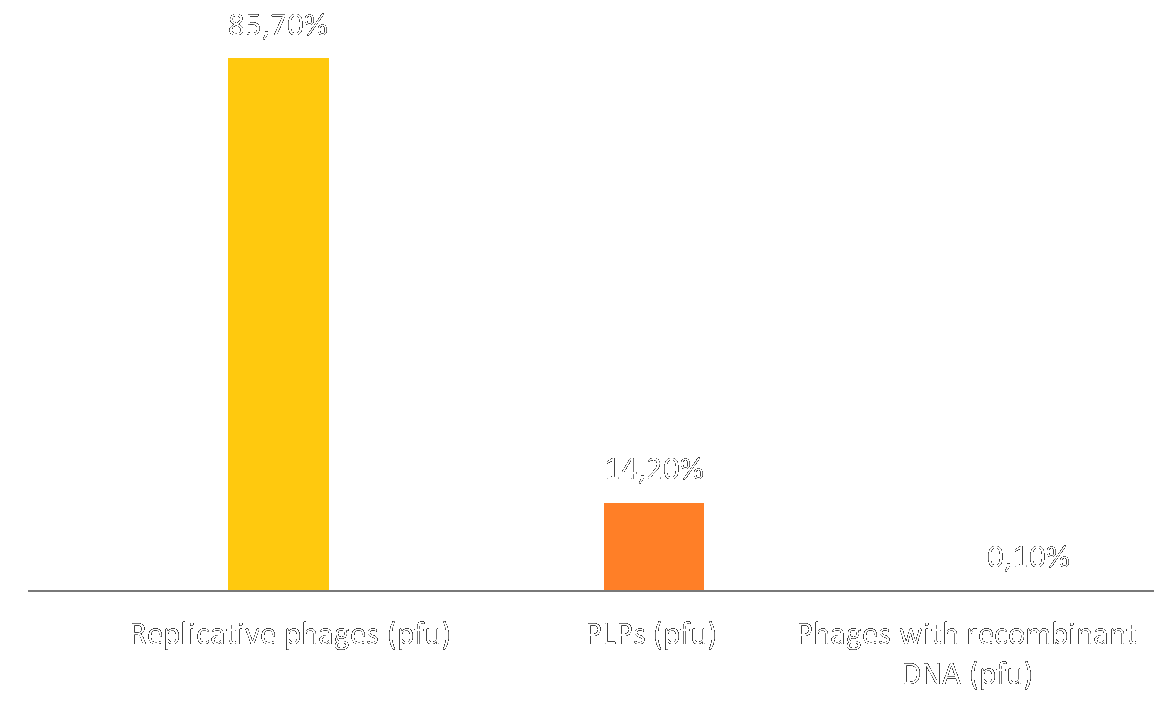| Line 1: | Line 1: | ||
{{Aix-Marseille|title=Phage-like particles tests|toc=__TOC__}} | {{Aix-Marseille|title=Phage-like particles tests|toc=__TOC__}} | ||
| − | ==Phage-like particles (PLPs) in soil== | + | ==Phage-like particles (PLPs) in the soil== |
[[File:T--Aix-Marseille--Pinsoil-2.png|600px|right]] | [[File:T--Aix-Marseille--Pinsoil-2.png|600px|right]] | ||
| − | We first tested the lifetime of our phage-like particles (PLPs) in soil. The soil samples can from the [http://www.moulindevelaux.com/ '''Moulin de Velaux'''] which is an olive | + | We first tested the lifetime of our phage-like particles (PLPs) in the soil. The soil samples can from the [http://www.moulindevelaux.com/ '''Moulin de Velaux'''] which is an olive grower cooperative in southern France. For this experiment, we put M13 phages in the soil and we let it incubate for different amounts of time. As seen in figure 1, the population of phage decreases with time because they are degraded by micro-organisms that lived in the soil. The experimental half-life of our phage-like particles is approximately of 4 hours. |
With this result, we can be confident that our phage-like particles solution doesn't pollute the soil. This test is one of the many tests needed for the marketing authorization procedure of our production. Check out our [[Team:Aix-Marseille/Legislation|legislation page]] for more information. | With this result, we can be confident that our phage-like particles solution doesn't pollute the soil. This test is one of the many tests needed for the marketing authorization procedure of our production. Check out our [[Team:Aix-Marseille/Legislation|legislation page]] for more information. | ||
| Line 11: | Line 11: | ||
==Test with ''Arabidopsis thaliana''== | ==Test with ''Arabidopsis thaliana''== | ||
| − | [[File:T--Aix-Marseille--Leaf-1.png|800px|center|thumb|Fluorescent PLPs in ''Arabidopsis thaliana'' leaf. A) Control leaf without | + | [[File:T--Aix-Marseille--Leaf-1.png|800px|center|thumb|Fluorescent PLPs in ''Arabidopsis thaliana'' leaf. A) Control leaf without fluorescent PLPs, B) Leaf sting with fluorescent PLPs, C) Leaf infiltrated with fluorescent PLPs, D) Leaf with fluorescent PLPs dropped and E) Leaf soaked with fluorescent PLPs.]] |
[[File:T--Aix-Marseille--Leaf-MO-2.png|400px|right|thumb|Fluorescent PLPs seen in ''Arabidopsis thaliana'' leaf petiole by confocal microscopy. Left shows fluorescent PLPs in epithelium and right shows them in plant vessels.]] | [[File:T--Aix-Marseille--Leaf-MO-2.png|400px|right|thumb|Fluorescent PLPs seen in ''Arabidopsis thaliana'' leaf petiole by confocal microscopy. Left shows fluorescent PLPs in epithelium and right shows them in plant vessels.]] | ||
| − | The [[Team:Aix-Marseille/HP/Surveys|farmer's surveys]] advises us that depending on the agriculture form, various final | + | The [[Team:Aix-Marseille/HP/Surveys|farmer's surveys]] advises us that depending on the agriculture form, various final forms of our product were preferable. So we thought that it was preferable to find the best way to administer our cure. In order to find the best way to give the cure to the tree we tested multiple ways. First, we link our phage-like particles (PLPs) to a fluorochrome, thus making a solution of fluorescent PLPs. Then, this solution was used on ''Arabidopsis thaliana'' in three ways : |
* the use of a sting on the leaf (which mimics the injection). | * the use of a sting on the leaf (which mimics the injection). | ||
* infiltration of the solution through the leaf. | * infiltration of the solution through the leaf. | ||
| Line 22: | Line 22: | ||
The control is leaf without any solution. As you can see the use of sting and infiltration are more efficient than dropping the solution. | The control is leaf without any solution. As you can see the use of sting and infiltration are more efficient than dropping the solution. | ||
| − | Finally, we wanted to know if the phage was able to infiltrate the integrity of the leaf. We can see that all the cells are infiltrated with fluorescent PLPs. Thus, PLPs aren't just confined | + | Finally, we wanted to know if the phage was able to infiltrate the integrity of the leaf. We can see that all the cells are infiltrated with fluorescent PLPs. Thus, PLPs aren't just confined to leaf vessels. |
| Line 31: | Line 31: | ||
Thanks to [[Team:Aix-Marseille/HP/Interviews|Jacques VAN HELDEN interview]] we put attention to the production rate of our PLPs and the risk of recombination between M13KO7 and the phagemid. This question matter because we aim to create PLPs that aren't able to replicate and thus spread in the environment. Therefore, we test this possibility along our [[Team:Aix-Marseille/Modelmodelling part|model]]. | Thanks to [[Team:Aix-Marseille/HP/Interviews|Jacques VAN HELDEN interview]] we put attention to the production rate of our PLPs and the risk of recombination between M13KO7 and the phagemid. This question matter because we aim to create PLPs that aren't able to replicate and thus spread in the environment. Therefore, we test this possibility along our [[Team:Aix-Marseille/Modelmodelling part|model]]. | ||
| − | As you can witness, recombination only occurs for 0,1% of phages, this is | + | As you can witness, recombination only occurs for 0,1% of phages, this is coherent with our assumptions. However, PLPs represent only 14,2% of the production against 85,7% for the replicative phage. This means that the vast majority of our production is phages containing M13KO7 DNA and that they cannot inject toxins. |
| − | + | Eventually, this result is due because the M13KO7 M13ori has a stretch with a better for p5. To counteract this result, we could make p5 select the phagemid by modifying more M13KO7 M13ori, or we could try to enhance the M13ori part of our phagemid. | |
Revision as of 15:36, 29 October 2017
Phage-like particles tests
Contents
Phage-like particles (PLPs) in the soil
We first tested the lifetime of our phage-like particles (PLPs) in the soil. The soil samples can from the [http://www.moulindevelaux.com/ Moulin de Velaux] which is an olive grower cooperative in southern France. For this experiment, we put M13 phages in the soil and we let it incubate for different amounts of time. As seen in figure 1, the population of phage decreases with time because they are degraded by micro-organisms that lived in the soil. The experimental half-life of our phage-like particles is approximately of 4 hours.
With this result, we can be confident that our phage-like particles solution doesn't pollute the soil. This test is one of the many tests needed for the marketing authorization procedure of our production. Check out our legislation page for more information.
Test with Arabidopsis thaliana
The farmer's surveys advises us that depending on the agriculture form, various final forms of our product were preferable. So we thought that it was preferable to find the best way to administer our cure. In order to find the best way to give the cure to the tree we tested multiple ways. First, we link our phage-like particles (PLPs) to a fluorochrome, thus making a solution of fluorescent PLPs. Then, this solution was used on Arabidopsis thaliana in three ways :
- the use of a sting on the leaf (which mimics the injection).
- infiltration of the solution through the leaf.
- dropping the solution on the leaf (mimic spray).
- the soaking of the solution by the petiol.
The control is leaf without any solution. As you can see the use of sting and infiltration are more efficient than dropping the solution.
Finally, we wanted to know if the phage was able to infiltrate the integrity of the leaf. We can see that all the cells are infiltrated with fluorescent PLPs. Thus, PLPs aren't just confined to leaf vessels.
PLPs rate of production
Thanks to Jacques VAN HELDEN interview we put attention to the production rate of our PLPs and the risk of recombination between M13KO7 and the phagemid. This question matter because we aim to create PLPs that aren't able to replicate and thus spread in the environment. Therefore, we test this possibility along our model.
As you can witness, recombination only occurs for 0,1% of phages, this is coherent with our assumptions. However, PLPs represent only 14,2% of the production against 85,7% for the replicative phage. This means that the vast majority of our production is phages containing M13KO7 DNA and that they cannot inject toxins.
Eventually, this result is due because the M13KO7 M13ori has a stretch with a better for p5. To counteract this result, we could make p5 select the phagemid by modifying more M13KO7 M13ori, or we could try to enhance the M13ori part of our phagemid.





